The Gibbon Experience, Bokeo, Laos
The Gibbon Experience is an innovative forest conservation project in northwestern Laos, where visitors spend three days living in treehouses built 40 meters above the ground, reachable only by a network of ziplines and a few short hikes. The lucky ones get to catch glimpses of Black Gibbon apes who live in the forest.
A few months ago in ‘nam I met a guy from Montreal named Liel who said The Gibbon Experience had been one of the highlights of his trip so far, so I put it on my things-I’d-really-like-to-do list.
He had done it months earlier when the road and trails were much wetter so much of the adventure was just getting there — hiking barefoot through thick mud, etc — but after reading more about it online I knew it would be fun whether it was muddy or not.
It takes place in the Bokeo Nature Reserve, a 123000 hectare area in the province of Bokeo, which shares a border with Myanmar and Thailand.
I’ll quote a bit from the Gibbon Experience brochure:
Poaching, logging and slash-and-burn farming are destroying primary forest and its inhabitants in South East Asia. The team at Animo has long been looking for innovative methods to solve this problem.
A concept emerged: with the local people we build tree houses and a network of zip lines which guests use to scour the canopy in search of the elusive Black Gibbon.
Bokeo Nature Reserve is rich in biodiversity: birds, insects, and mammals including bears, tigers, and migrating populations of wild buffalo and elephants.
By taking guests into Bokeo Reserve we raise both awareness of conservation issues, and funds for local agriculture transition and forest guard activities. […]
At present, Lao National Parks have no forest guards for day-to-day protection. Only the forest guards in the Bokeo Nature Reserve receive a salary; fully funded by The Gibbon Experience. They presently monitor one third of the 123,000 hectare reserve.
There were two trip options when I went: the Classic Experience and the Waterfall Experience; the Waterfall option takes you further into the forest and has more required trekking, 2-3 hours/day. I tried to book the Waterfall trip and even planned my travel dates around it since the trips leave on alternating dates, but due to a miscommunication with the office ended up on the Classic. It turned out that all the Waterfall trips were fully booked for weeks by the time I tried to reserve a spot so there’s no way I could have done it anyway.
But it didn’t really matter which trip I was on, because with the Classic Experience I had lots of free time to do all the extra trekking I wanted, including a visit to Treehouse #5 where the Waterfall people stayed. (treehouse #4 was temporarily out of commission, I think due to damage from a recent storm)
Small groups of people travel into the forest together on alternating days; in our group there were two families with a total of five kids aged 4-10 or so, an American/Thai couple, two English girls and me. The families were in treehouse #1, the couple in #2, and I was stuck in #3 with the cute English girls. Treehouse #3 was the best of the three in my opinion, though the others were better for playing on ziplines.
When I imagined the families and kids (many of them blonde) living in treehouses I was instantly reminded of a TV show I watched when I was a kid, Swiss Family Robinson (I probably saw the Canadian version.)
When I later learned that both of these families were Swiss, I nearly burst out laughing. I tried to remember what the show’s title sequence looked like so I could get them to pose for a similar picture, but couldn’t remember much about it.
After watching a video on how to use the ziplines, we were shuttled three hours from the town of Huay Xai on the Thai border to Ban Toup, a small village on the border of the nature reserve. We were joined there by a small monkey and a black bear cub who were both quite cute, and constantly at each other’s throats. They seemed fairly evenly matched now but I wouldn’t give the monkey very good odds once the bear has grown a bit more.
From there we walked for about an hour to a building near treehouse #1 where our meals were prepared, where we were each given a harness to use on the ziplines connecting the treehouses; these are like normal rock climbing harnesses except for an extra little roller/brake contraption and redundant safety rope and carabiner attached to them.
We walked to the first zipline leading to treehouse #1. The kids were taken across by guides on the first few zips but the older ones were allowed to go on their own after a while.
We spent the next few days living in treehouses, hiking through the forest and playing around on the ziplines. There are a total of seven ziplines leading to treehouse #3; I think the longest one is about 1 km long.
The treehouses were pretty impressive: each has running water from a nearby spring, there’s a shower and toilet, sinks in the kitchen and bathroom, and all the water is completely safe to drink. The toilet is just a normal squat toilet with nothing underneath it but a 40m drop to the forest floor. I heard there are pigs at treehouse #1 that help clean up the mess; on day 2 when we were eating pork sausages for dinner I remarked on this beautiful circle of life.
The beds were quite comfortable, with duvets and thick mosquito nets. The shower looked pretty fun because you could see right down into the forest through a bamboo grate, but I never used it because it and the toilet were constantly swarming with hornets. (except for few quick pees, when I couldn’t resist trying to piss the bees off, heh heh)
At some point within the first hour in the reserve something bit me on the finger (some kind of bug, not the monkey or bear), and my finger started to swell up, and soon the back of my hand did as well. It was really weird: one hand was its usual veiny self and the other had no veins visible and instead looked like a big meaty mitten. I was a bit worried because I had never had an allergic reaction to anything in my life, and I didn’t know how concerned to be about this one, or when or where the swelling would stop.
One of the Swiss ladies on the trip gave me some antihistamine cream and drops, and I had a couple antihistamine tablets in my pack; these all helped reduce the swelling. In the next couple days I had a few more fingers swell up from other bites, along with other small spots on my elbow and foot.
I wonder what kind of bugs these were: they looked kind of like a cross between a mosquito and a fly; fairly small, and easy to kill. I applied repellent regularly but don’t like having much on my hands because I don’t want it to get in my mouth or eyes when eating or wiping sweat off my face.
The views from the treehouses were fantastic, especially at dawn and sunset.
On the first day the guides told us there was a storm forecast that night, and if it got too windy we would have to evacuate the treehouse to the shelter on ground nearby. We were told to keep our harnesses ready and if they made the call to evacuate, to leave everything behind except our flashlights.
Around 8pm or so a big thunderstorm started, and for an hour or two we watched the lightning show all around us. Unfortunately it was just bright flashes, no cool zigzaggy lightning bolts. We counted the seconds between lightning and thunder and most of the time they were quite far away, 10-20 seconds or so. Once I counted only two seconds; I think that was the closest it got.
The guides were amazingly well-tuned to the weather: they told us to put our harnesses on because they could hear strong winds coming, when all I could hear were crickets and birds. Sure enough a while later it got quite windy, and they correctly predicted other weather events as well. When the lightning was distant enough from the treehouse we got the call to evacuate, “Now we go.”
The girls were pretty freaked out about ziplining away in the middle of a thunderstorm, but I wasn’t worried. The next day we talked about fear (in the context of some spiders that were sharing our treehouse) and I agreed that I didn’t like spiders much but as far as scary activities went, if I was convinced something was safe I had no problem doing it: things like ziplining and rock climbing are made safe by using quality equipment and redundant lines; ziplining when lightning is far away poses no danger so there’s no reason to be afraid. But I was glad they were there because it would have been a boring evacuation otherwise :)
We hung out in the shelter for a while and made a note to bring a deck of cards along next time. When the storm seemed to have passed we went back into the treehouse, had a snack of leftover rice from dinner mixed with some sweetened condensed milk, then set up the mosquito nets and went to bed.
The storm started up again and around midnight the guides woke us up and told us to prepare to evacuate again. We put on our harnesses and waited a bit but it never got very windy so we were allowed to go back to bed; we elected to sleep with our harnesses on from that point.
The next morning around 6am we awoke to the sound of tons of forest life; after a while we could hear Gibbons singing as well, a sound I can’t really think how to describe. I recorded a bit of it but won’t include a link here because it might give people less incentive to visit for themselves.
I had planned to get up early to try to go for a guided walk around the forest because dawn was the best time to see animals, but after sleeping only a few hours and taking an antihistamine (a.k.a. sleeping pill) in the middle of the night to reduce the swelling in my hand, I decided to sleep in instead.
We had breakfast from the big plastic box of goodies at our treehouse and each of us ate as much as we could to give us energy to trek and zip around all day; later we learned we would be given a real cooked breakfast at treehouse #1, oops.
One thing that disappointed me about this trip were the guides we had: the marketing info says the trips include “Local guides eager to show you the forest and its inhabitants”, but I would replace “eager” with “reluctantly willing”. I asked a couple times about going for a walk to see animals or going for a guided walk the next morning, but only got confusion and “no animals” as a response.
I think the more experienced guides were assigned to the treehouse with the kids, so the ones we had were fairly new (a couple of them said they had had this job for 3 months), and the main issue was the language barrier between us. I expect the more experienced guides would have done much more in terms of teaching us about the forest, animals, treehouses and the conservation program.
In the afternoon I went for a walk on my own to try to find some critters to photograph, but all I found was a cool red bug, a giant black squirrel that I thought was a Gibbon from the way it was moving through the trees (far away; too quick to photograph), and a couple English birds.
We thought about zipping our way to treehouse #5 to check it out (a Canadian guy volunteering here said it’s really cool), but the only way back was a 2-3 hour hike and after getting back from lunch we didn’t have enough time or energy left to do it. It turned out to be a good thing we didn’t, because a storm came in around 5pm and we would have been right in the middle of the trek back around then.
The three of us sat in the treehouse watching the storm build; around 5:30 when the wind got strong enough to make the treehouse start to creak we decided to evacuate to the shelter nearby. This evacuation wasn’t nearly as scary as last night’s because we still had daylight and it hadn’t started raining yet. When the storm failed to materialize after a while Maria noted it might have been a premature evacuation :)
We gathered some firewood and the guides showed up shortly afterwards with dinner; unfortunately due to a miscommunication between them they had left most of the food behind and brought only the rice. So all we had for dinner was rice, and some bread, pineapple and a toasted rice snack we had taken from the bin at the treehouse. Good thing we had two breakfasts!
The meals we did eat were very good: each of them had white rice with about 3-4 different veggie dishes, all of them excellent. (though the standard way to prepare veggies in SE Asia seems to be to boil them to oblivion; I haven’t had nice crisp steamed vegetables in months. Though I’m glad they’re well-boiled here from a food safety perspective.)
The storm came and went but the guides said we would spend the night in that shelter, and one went to fetch bedding from the treehouse. We applied insect repellent and got tucked in carefully to prevent bites, but after about an hour I still couldn’t sleep due to concern of waking up covered in bites the next day.
Between fear of malaria (I had forgotten to take my malaria meds that day, for the first time in months), the mysterious bug I was allergic to, Sarah lightly snoring on my left and one of the guides getting a bit too cuddly on my right (unintentionally I’m sure) I realized I had no hope of getting any sleep there, so I decided to risk the wrath of the guides and waking the others and zipped back to the treehouse since I knew there was a thick mosquito net and comfy mattress and duvet there with my name on it, and since the weather was completely calm by that point.
As I crawled into bed I was greeted by a couple rat droppings on one of my pillows, which must be the treehouse equivalent of the chocolates you get in fancy hotels. I pushed that pillow aside, inspected the rest of the bed for other goodies and quickly fell asleep in the security of my mosquito net. I heard a rat rooting around and gnawing on stuff in the treehouse but didn’t think he would be likely to try to make his way through the mosquito net.
On day 3 we again awoke to the sound of Gibbons singing; the families staying in treehouse #1 actually spotted a few of them today. Sarah and Maria arrived in the morning after a sleepless night of listening to another rat root around and chew on garbage nearby; they had woken up shortly after I left and wanted to return to the treehouse but didn’t have a flashlight and the guide wouldn’t let them use his or accompany them back to the treehouse. I felt bad about leaving them there but they were both asleep when I left and I expected the guide to bring them back if they wanted to. Maybe he wasn’t awake enough to think clearly. (he apologized the next day)
We spent the morning playing and making goofy videos on the ziplines. Ziplining on its own is a pretty safe and easy activity, but when you add the distraction of video production it becomes somewhat less so. A few times I let my head touch the zipline; I don’t think I ever got visibly burnt by it but Maria ended up with a small mark on her forehead.
After a great breakfast at treehouse #1 we made our way out of the reserve, stopping to watch the monkey and bear scrap for a while. It was amazingly fun to watch; they’re both so cute and have such different fighting styles: the monkey is really quick and agile, and the bear is slow and clumsy but more powerful. This video always cracks me up.
All in all it was a fantastic experience that I would recommend to anyone, in spite of disappointment with the guides. I expect the guides would be better on the average than the ones we had, and I think they would have done the guided walks if I had pushed them a bit more. (but I shouldn’t have to)
I was really impressed with the general idea: I love creative ideas to problem solving where everyone benefits; in this case it seems that everyone is clearly so much better off that there’s no way the project can fail. I wonder how well it would work elsewhere; does it work here only because the location is exotic and local labor is inexpensive?
Elsewhere in their literature there was a phrase that went something like “It costs less than 1 Euro per hectare to transform an economy based on forest destruction to an economy based on forest conservation.”
Pretty cool.
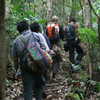

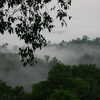


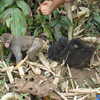
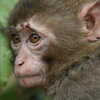

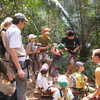
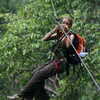

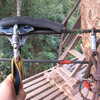
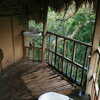

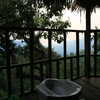
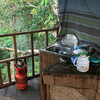
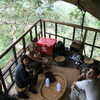
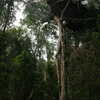
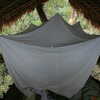
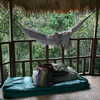

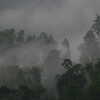

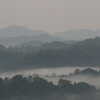
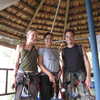

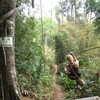
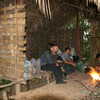
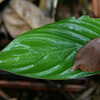
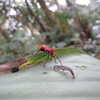

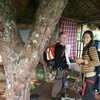
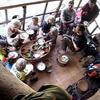
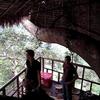
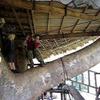
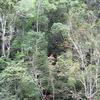
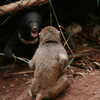
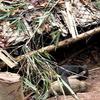
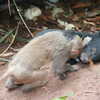
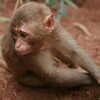
June 26th, 2007 at 10:39 am UTC
Great blog Ger, enjoyed reading your posts